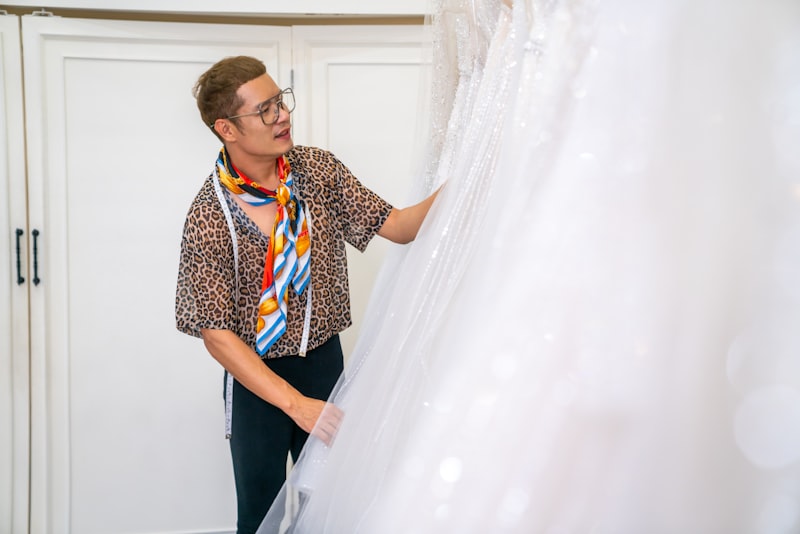Cultural Commentary Through Bridal Attire Trends: A Reflection of Society
Cultural Commentary Through Bridal Attire Trends: A Reflection of Society
Understanding Cultural Commentary Through Bridal Attire Trends
Bridal attire has always been more than just clothing; it serves as a lens through which we can examine cultural shifts, societal values, and the evolving role of marriage in different communities. As we dive into the world of bridal fashion, we will explore how these trends offer cultural commentary and reflect pertinent changes within society. In this article, we will evaluate the historical context, current trends, and the significance of bridal attire, while providing insights that will be valuable for brides-to-be and fashion enthusiasts alike.
The Historical Context of Bridal Attire
To truly appreciate modern bridal attire trends, it is essential to understand their historical roots. Traditional wedding dresses have varied tremendously over time and across cultures. For instance, the iconic white wedding dress, popularized by Queen Victoria in the 19th century, symbolized both purity and a break from the norm, heralding a new era of bridal fashion.
Throughout the decades, cultural commentary can be traced through bridal attire:
| Decade | Trend | Cultural Significance |
| 1920s | Flapper dresses | Emphasis on women's liberation and social change |
| 1950s | A-line dresses with full skirts | Return to conservative values post-WWII |
| 1980s | Elaborate and oversized gowns | Reflecting the era's excess and ambition |
| 2000s | Simple and elegant styles | Shift towards minimalism and personal expression |
Current Trends in Bridal Attire
Fast forward to the present day, where bridal attire trends reveal a wealth of cultural commentary. A significant focus is placed on inclusivity, sustainability, and personalization, showcasing how interconnected society has become. Below are some of the most noteworthy trends:
1. Inclusivity and Diversity in Designs
Today's bridal market is far more inclusive than ever. Designers are embracing body positivity by offering a wider range of sizes, styles, and fits. This shift echoes societal progress towards accepting all body types and promoting self-love.
Many brides are also opting for cultural attire that reflects their heritage, be it traditional Chinese dresses known as qipaos or vibrant Indian lehengas. This trend underscores the importance of identity and individualism in modern weddings.

2. Sustainable Fashion Choices
With increasing awareness of environmental impact, many brides are leaning towards sustainable fashion options. Recycled fabrics, vintage gowns, and eco-friendly materials are gaining popularity. This trend not only reflects an individual's values but also stands as a cultural commentary on the ecological challenges our society faces today.
3. Non-Traditional Attire
Today's brides are breaking free from conventional white gowns. Many are now opting for jumpsuits, suits, and even colorful dresses to express their unique style. This monumental shift speaks to a broader cultural change in how we view marriage and gender roles. The acceptance of non-traditional bridal attire highlights the growing movement towards personal agency in fashion choices.
The Global Influence on Bridal Attire Trends
The world is more connected than ever, resulting in a fusion of bridal styles across cultures. For instance, western bridal designs are starting to incorporate Asian influences, such as intricate beading and layering techniques. Conversely, Asian cultures are modernizing their traditional wear to cater to contemporary brides. This globalization of fashion not only impacts the designs but also the narratives surrounding them.
Bridal Trends and Celebrity Influence
Celebrities play an essential role in influencing bridal attire trends. Iconic weddings, such as those of Meghan Markle and Priyanka Chopra, have sparked new trends in bridal fashion, from minimalist aesthetics to elaborate traditional outfits, respectively. The choices made by high-profile individuals have the power to shape public perception and influence consumer behavior.
For example, Meghan Markle’s elegant and understated wedding gown highlighted modern minimalism, urging many brides to reconsider their approach to bridal attire. In contrast, Priyanka Chopra's vibrant and multi-day wedding celebrations showcased a love for cultural heritage and opulence.
Social Media's Role in Shaping Trends
Social media platforms, particularly Instagram and Pinterest, have transformed how brides discover and choose their wedding attire. These platforms allow for the rapid dissemination of ideas, making wedding trends accessible worldwide. The power of hashtags and influencer partnerships means that a single bridal look can inspire thousands of replicas almost overnight.
Moreover, user-generated content empowers brides to share their unique choices, further diversifying the global bridal landscape.
Conclusion: The Importance of Cultural Commentary in Bridal Attire
Bridal attire trends provide rich cultural commentary that reflects societal values and changes. As we observed, the evolution from traditional wear to modern, inclusive, and sustainable choices signifies a broader dialogue about identity, values, and societal pressures.
For brides-to-be, choosing bridal attire should be about personal expression and a reflection of one's identity rather than merely following trends. While it's beneficial to stay informed about current trends, the most important aspect is to choose what resonates with your individuality and aligns with your values.
In summary, understanding the cultural significance behind bridal attire can empower brides to make informed, personal choices that resonate with their beliefs and preferences. As society continues to evolve, so too will the trends in bridal attire, offering new ways to celebrate love and commitment.
Tips: As you embark on your bridal journey, consider exploring various styles that reflect who you are as a couple. Don't hesitate to mix traditional elements with modern trends to create a unique look that tells your story. Always prioritize comfort and choose designs that make you feel confident and beautiful on your special day.
